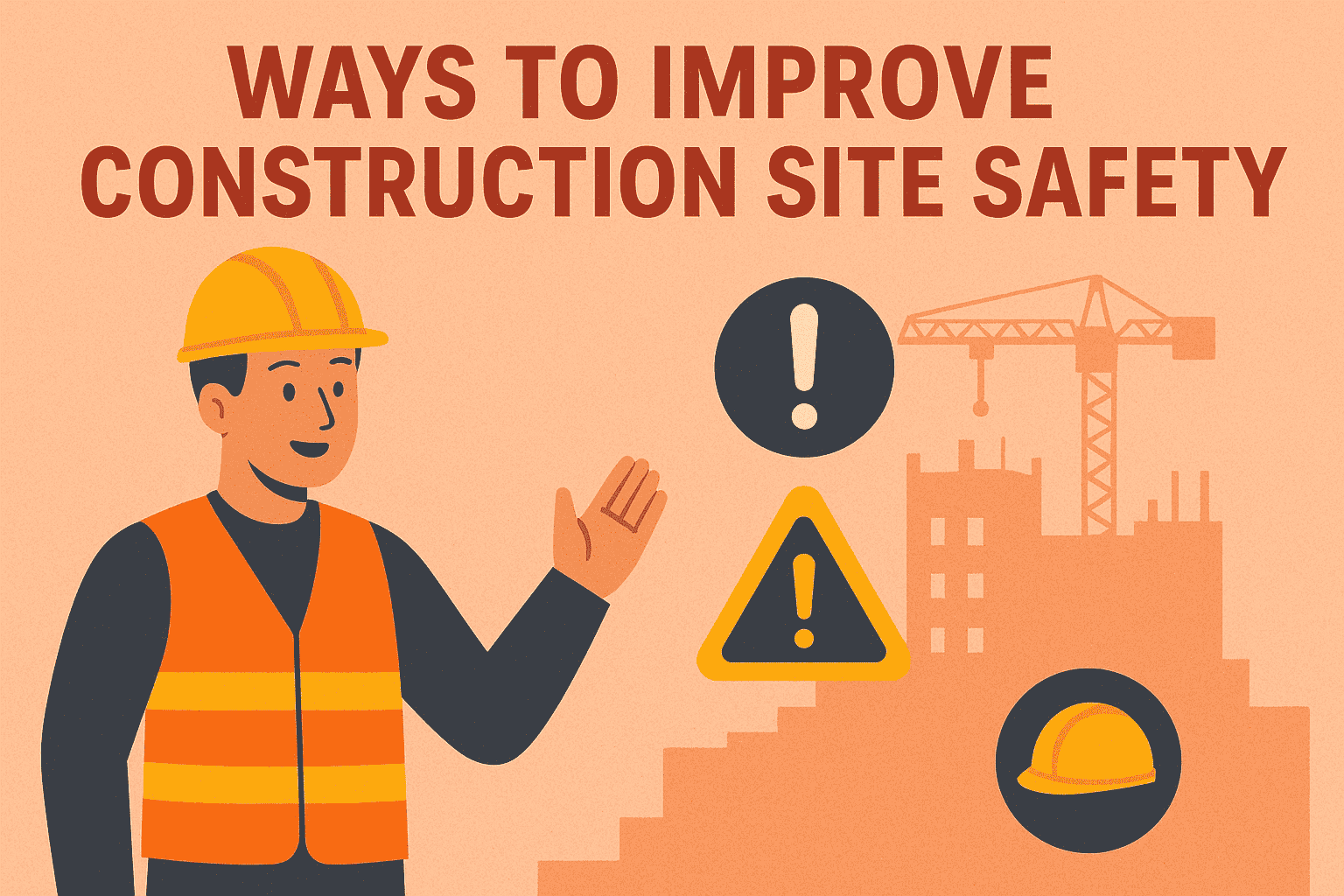Creating Safer Construction Sites Through Awareness and Action
Construction sites are among the most hazardous workplaces, with risks ranging from falls and equipment failures to weather-related incidents. According to OSHA, one in five workplace deaths occurs in construction—most of them preventable through effective safety planning and procedures.
This guide explores practical ways to improve construction site safety, reduce risks, and ensure your team goes home safe every day.
Understanding the Key Risk Factors in Construction Safety
Fall Protection: A Critical Safety Measure
Falls remain the leading cause of fatalities in construction. OSHA mandates that employers must provide fall protection for workers operating at heights of six feet or more. Effective systems include guardrails, safety nets, and personal fall arrest systems. Regular inspections of scaffolding, ladders, and harnesses can significantly reduce fall-related injuries.
Equipment Hazards: Ensure Proper Maintenance and Operation
Heavy machinery such as cranes, excavators, and forklifts is essential—but also dangerous if not properly maintained. Establishing a routine inspection schedule and ensuring only trained personnel operate such equipment are vital steps. Predictive maintenance technologies can help detect early signs of wear and prevent costly, hazardous breakdowns.
Environmental Conditions: Weather and Site Factors
Rain, snow, or poor lighting can create unsafe conditions. Proper planning—like halting work during high winds or installing temporary lighting—can prevent accidents. Monitoring environmental conditions daily and adapting safety measures accordingly ensures that external factors don’t compromise worker safety.
Proven Ways to Improve Construction Site Safety
Hold Regular Toolbox Talks and Safety Meetings
Toolbox talks are short, focused discussions designed to keep safety top of mind. They’re ideal for addressing daily hazards, reviewing proper PPE usage, and discussing recent incidents or near misses. Encouraging open communication helps workers feel empowered to raise safety concerns before they become accidents.
Implement Digital Safety Checklists for Standardization
Digital safety checklists streamline daily safety checks and eliminate paperwork errors. Using safety management apps, supervisors can monitor compliance in real-time and ensure that inspections aren’t missed. Consistent documentation also helps demonstrate compliance during audits or inspections.
Perform Regular Safety Audits and Inspections
Scheduled and unscheduled safety audits allow you to identify and correct potential hazards before incidents occur. Audits should evaluate everything—from PPE availability to machinery conditions—and include corrective action plans. These inspections promote a proactive safety culture that focuses on prevention, not just compliance.
How Aura Safety Consultants Can Enhance Your Site Safety
Expert Safety Audits & Custom Safety Solutions
Every construction site is unique, and so are its safety challenges. Aura Safety Consultants conduct detailed site audits to identify risk areas and develop customized safety strategies. From scaffolding inspections to emergency planning, we tailor every safety protocol to fit your specific operational environment.
Ongoing Safety Training for Construction Teams
Our certified trainers provide continuous education programs that keep your team updated on the latest safety standards. Training covers OSHA compliance, fall prevention, machinery handling, and emergency response. Regular refresher sessions reinforce learning and maintain a high level of safety awareness among workers.
Support with Compliance and Regulatory Requirements
Navigating OSHA and local safety regulations can be complex. Aura Safety Consultants assist with compliance audits, documentation, and safety certifications. Our experts ensure that your site not only meets legal requirements but also exceeds industry best practices—reducing liability and protecting your reputation.
Best Practices for Maintaining Construction Site Safety
Establish Clear Safety Protocols
Develop and distribute comprehensive safety policies that outline every worker’s responsibilities. Display safety signage in key areas and review procedures during onboarding and training. Consistent communication fosters accountability and reinforces a safety-first mindset across your workforce.
Ensure Proper PPE Usage and Maintenance
Personal Protective Equipment (PPE) is your first line of defense against injuries. Hard hats, gloves, high-visibility vests, and steel-toe boots must be checked regularly for wear and replaced as needed. Supervisors should verify PPE compliance daily to ensure no shortcuts compromise safety.
Maintain Clear Communication Across the Team
A lack of communication often leads to accidents. Use radios, mobile apps, or PA systems to ensure everyone can relay important information quickly. Establish clear reporting channels for hazards or near misses so that issues can be addressed immediately.
Conclusion: Building a Culture of Safety
Improving construction site safety isn’t just about meeting compliance—it’s about protecting people. By identifying risks early, training workers continuously, and implementing digital tools for monitoring, you can create a safer, more efficient job site.
Remember, safety starts with leadership and grows with consistent action. Investing in safety today prevents costly accidents tomorrow.
Ready to make your construction site safer and fully compliant?
Contact Aura Safety Consultants today for expert safety audits, tailored training programs, and regulatory compliance support. Together, we’ll build a stronger foundation for safety—one site at a time.


